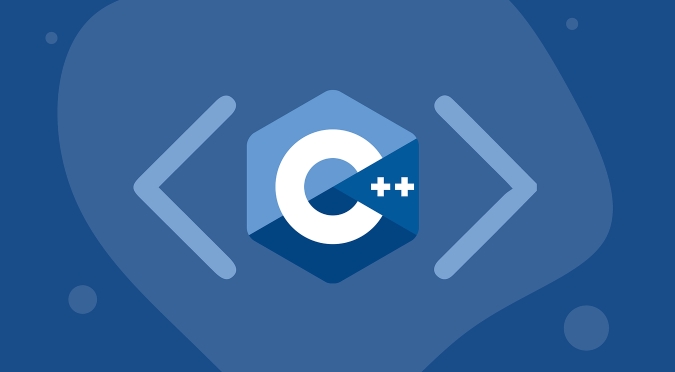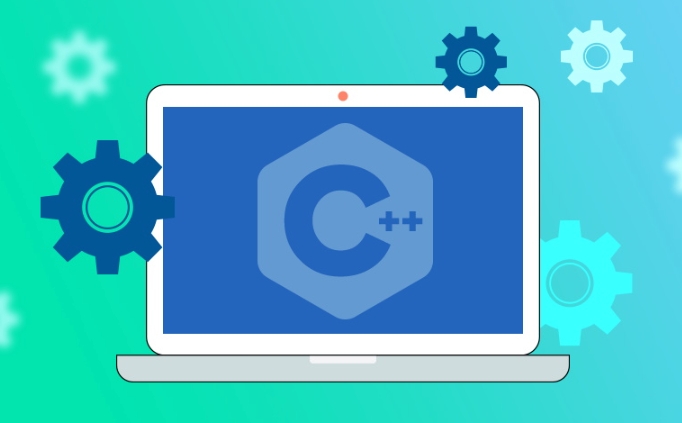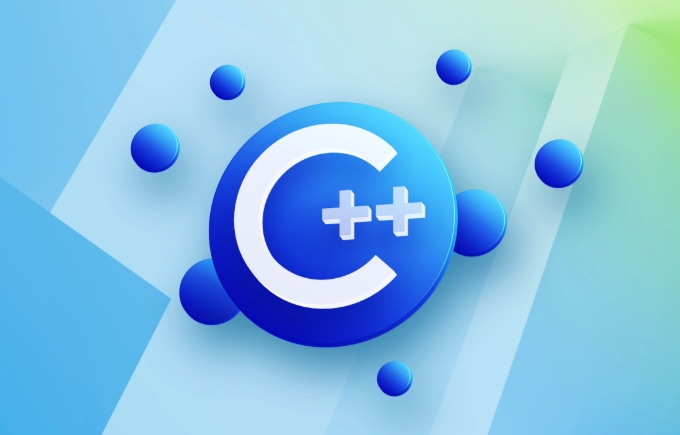The program creates a window with a button and clicks the button to pop up the message box. 1. Use QApplication to manage applications; 2. QWidget as the main window; 3. QPushButton as the button; 4. QVBoxLayout layout management; 5. QObject::connect connect signals and slots; 6. QMessageBox display information; 7. app.exec() starts the event loop. After complete operation, the window is displayed and respond to clicks. The program continues to run until it is closed.

Below is a simple C Qt sample program that uses the Qt framework to create a window with a button. Clicking the button will bring up a message box. This example is suitable for beginners to understand the basic structure and signal slot mechanism of Qt.

? Preparation
Make sure you have installed:
- Qt development environment (such as Qt Creator Qt SDK)
- Or use the command line to cooperate with qmake and compiler (such as MinGW or MSVC)
? 1. main.cpp
#include <QApplication>
#include <QWidget>
#include <QPushButton>
#include <QMessageBox>
#include <QVBoxLayout>
int main(int argc, char *argv[])
{
// Create an application object (must)
QApplication app(argc, argv);
// Create the main window QWidget window;
window.setWindowTitle("Qt Simple Example");
window.resize(300, 150);
// Create layout and button QVBoxLayout *layout = new QVBoxLayout(&window);
QPushButton *button = new QPushButton("Click Me", &window);
layout->addWidget(button);
// Connect the button's click signal to the slot (Lambda expression)
QObject::connect(button, &QPushButton::clicked, [&]() {
QMessageBox::information(&window, "Hello, Qt!");
});
// Display window window.setLayout(layout);
window.show();
// Enter the application event loop to return app.exec();
} ? 2. CMakeLists.txt (recommended modern construction method)
cmake_minimum_required(VERSION 3.16) project(SimpleQtApp) # Find the Qt package (Qt6 is required. If you use Qt5, please change to find_package(Qt5 REQUIRED COMPONENTS Widgets)) find_package(Qt6 REQUIRED COMPONENTS Widgets) set(CMAKE_AUTOMOC ON) set(CMAKE_AUTORCC ON) set(CMAKE_AUTOUIC ON) set(CMAKE_CXX_STANDARD 17) # Add executable file add_executable(SimpleQtApp main.cpp) # Link to the Qt Widgets module target_link_libraries(SimpleQtApp Qt6::Widgets)
? Or use .pro files (commonly used by Qt Creator)
QT = widgets TARGET = SimpleQtApp TEMPLATE = app SOURCES = main.cpp
?? Compile and run (command line method)
# Use qmake (Qt5/Qt6) qmake -project qmake make # or nmake (Windows MSVC) # Run ./SimpleQtApp
Or use CMake:

mkdir build && cd build cmake .. cmake --build . ./SimpleQtApp
? Effect description
- Open a 300×150 window
- There is a button in the middle "Click Me"
- A message box pops up after clicking the button: "Hello, Qt!"
? Key points explanation
-
QApplication: manages the control flow and main settings of the application, and each GUI program must have and only have one. -
QWidget: Basic window class, used as the main window. -
QPushButton: Button control. -
QVBoxLayout: vertical layout, automatic arrangement of controls. -
QObject::connect: Connects the signal (clicked) and slot (Lambda function) to realize event response. -
QMessageBox::information: A prompt dialog box pops up.
This example does not rely on .ui file or complex class splitting, and is suitable for quick access to basic usage of Qt. You can add more controls (such as input boxes, labels, menus, etc.) to expand the functionality based on this.
Basically, that's not complicated but it's easy to ignore details. For example, forgetting app.exec() program will flash by.

The above is the detailed content of C Qt example. For more information, please follow other related articles on the PHP Chinese website!

Hot AI Tools

Undress AI Tool
Undress images for free

Undresser.AI Undress
AI-powered app for creating realistic nude photos

AI Clothes Remover
Online AI tool for removing clothes from photos.

Clothoff.io
AI clothes remover

Video Face Swap
Swap faces in any video effortlessly with our completely free AI face swap tool!

Hot Article

Hot Tools

Notepad++7.3.1
Easy-to-use and free code editor

SublimeText3 Chinese version
Chinese version, very easy to use

Zend Studio 13.0.1
Powerful PHP integrated development environment

Dreamweaver CS6
Visual web development tools

SublimeText3 Mac version
God-level code editing software (SublimeText3)
 Using std::chrono in C
Jul 15, 2025 am 01:30 AM
Using std::chrono in C
Jul 15, 2025 am 01:30 AM
std::chrono is used in C to process time, including obtaining the current time, measuring execution time, operation time point and duration, and formatting analysis time. 1. Use std::chrono::system_clock::now() to obtain the current time, which can be converted into a readable string, but the system clock may not be monotonous; 2. Use std::chrono::steady_clock to measure the execution time to ensure monotony, and convert it into milliseconds, seconds and other units through duration_cast; 3. Time point (time_point) and duration (duration) can be interoperable, but attention should be paid to unit compatibility and clock epoch (epoch)
 How to get a stack trace in C ?
Jul 07, 2025 am 01:41 AM
How to get a stack trace in C ?
Jul 07, 2025 am 01:41 AM
There are mainly the following methods to obtain stack traces in C: 1. Use backtrace and backtrace_symbols functions on Linux platform. By including obtaining the call stack and printing symbol information, the -rdynamic parameter needs to be added when compiling; 2. Use CaptureStackBackTrace function on Windows platform, and you need to link DbgHelp.lib and rely on PDB file to parse the function name; 3. Use third-party libraries such as GoogleBreakpad or Boost.Stacktrace to cross-platform and simplify stack capture operations; 4. In exception handling, combine the above methods to automatically output stack information in catch blocks
 What is a POD (Plain Old Data) type in C ?
Jul 12, 2025 am 02:15 AM
What is a POD (Plain Old Data) type in C ?
Jul 12, 2025 am 02:15 AM
In C, the POD (PlainOldData) type refers to a type with a simple structure and compatible with C language data processing. It needs to meet two conditions: it has ordinary copy semantics, which can be copied by memcpy; it has a standard layout and the memory structure is predictable. Specific requirements include: all non-static members are public, no user-defined constructors or destructors, no virtual functions or base classes, and all non-static members themselves are PODs. For example structPoint{intx;inty;} is POD. Its uses include binary I/O, C interoperability, performance optimization, etc. You can check whether the type is POD through std::is_pod, but it is recommended to use std::is_trivia after C 11.
 How to call Python from C ?
Jul 08, 2025 am 12:40 AM
How to call Python from C ?
Jul 08, 2025 am 12:40 AM
To call Python code in C, you must first initialize the interpreter, and then you can achieve interaction by executing strings, files, or calling specific functions. 1. Initialize the interpreter with Py_Initialize() and close it with Py_Finalize(); 2. Execute string code or PyRun_SimpleFile with PyRun_SimpleFile; 3. Import modules through PyImport_ImportModule, get the function through PyObject_GetAttrString, construct parameters of Py_BuildValue, call the function and process return
 What is function hiding in C ?
Jul 05, 2025 am 01:44 AM
What is function hiding in C ?
Jul 05, 2025 am 01:44 AM
FunctionhidinginC occurswhenaderivedclassdefinesafunctionwiththesamenameasabaseclassfunction,makingthebaseversioninaccessiblethroughthederivedclass.Thishappenswhenthebasefunctionisn’tvirtualorsignaturesdon’tmatchforoverriding,andnousingdeclarationis
 How to pass a function as a parameter in C ?
Jul 12, 2025 am 01:34 AM
How to pass a function as a parameter in C ?
Jul 12, 2025 am 01:34 AM
In C, there are three main ways to pass functions as parameters: using function pointers, std::function and Lambda expressions, and template generics. 1. Function pointers are the most basic method, suitable for simple scenarios or C interface compatible, but poor readability; 2. Std::function combined with Lambda expressions is a recommended method in modern C, supporting a variety of callable objects and being type-safe; 3. Template generic methods are the most flexible, suitable for library code or general logic, but may increase the compilation time and code volume. Lambdas that capture the context must be passed through std::function or template and cannot be converted directly into function pointers.
 What is a null pointer in C ?
Jul 09, 2025 am 02:38 AM
What is a null pointer in C ?
Jul 09, 2025 am 02:38 AM
AnullpointerinC isaspecialvalueindicatingthatapointerdoesnotpointtoanyvalidmemorylocation,anditisusedtosafelymanageandcheckpointersbeforedereferencing.1.BeforeC 11,0orNULLwasused,butnownullptrispreferredforclarityandtypesafety.2.Usingnullpointershe
 How does std::move work in C ?
Jul 07, 2025 am 01:27 AM
How does std::move work in C ?
Jul 07, 2025 am 01:27 AM
std::move does not actually move anything, it just converts the object to an rvalue reference, telling the compiler that the object can be used for a move operation. For example, when string assignment, if the class supports moving semantics, the target object can take over the source object resource without copying. Should be used in scenarios where resources need to be transferred and performance-sensitive, such as returning local objects, inserting containers, or exchanging ownership. However, it should not be abused, because it will degenerate into a copy without a moving structure, and the original object status is not specified after the movement. Appropriate use when passing or returning an object can avoid unnecessary copies, but if the function returns a local variable, RVO optimization may already occur, adding std::move may affect the optimization. Prone to errors include misuse on objects that still need to be used, unnecessary movements, and non-movable types






